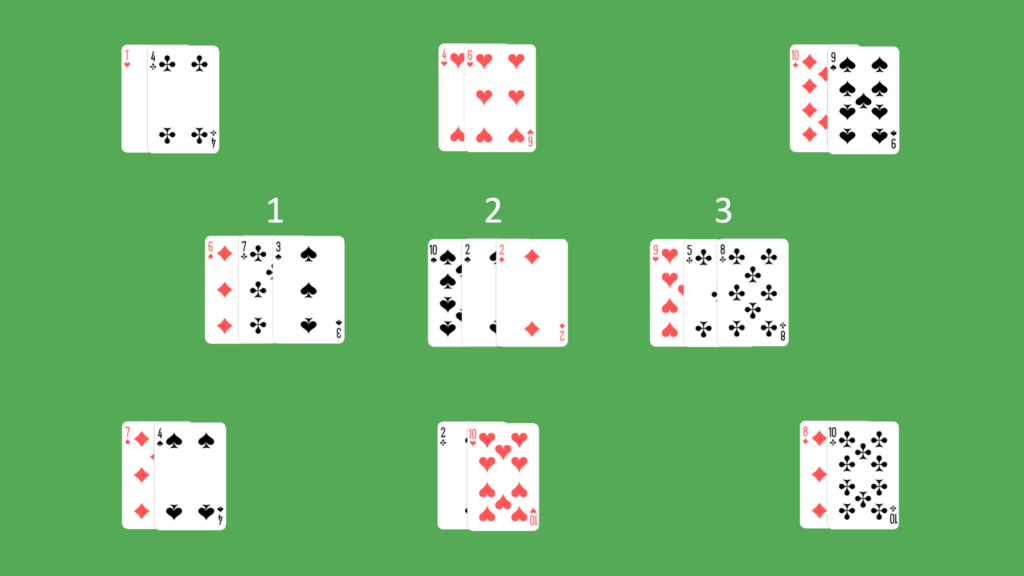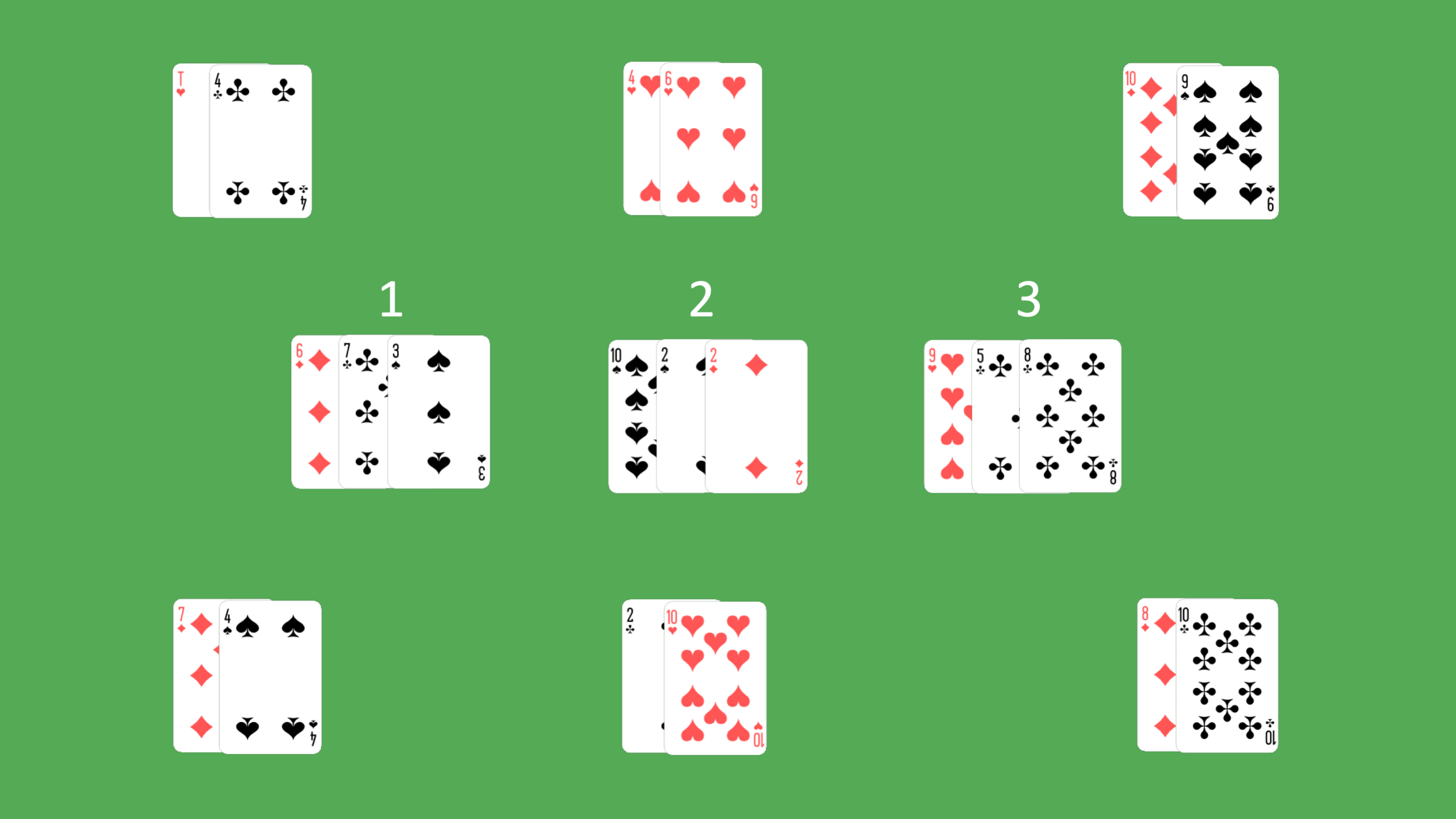Background
- Suits are campaign issues.
- Ranks are linear positions on issues.
- A hand of cards is a position or preference in issue-space.
- Ranks are additive, so the position of a hand with two cards of the same suit is the sum of their ranks.
- The absence of a suit (void) is treated as 0 for a candidate, and null (don’t care) for a player.
- The difference between two hands is their Manhattan distance in issue space.
Goal: Elect a candidate hand that minimizes your score (difference between your hand and that of the winning candidate).
Setup
- For P players, T teams, and C candidates, N(P+TC) cards are needed, so use additional decks as necessary, possibly one per team.
- Basic version: C=3, N=2
- Divide players into roughly equal-size teams. There should be 2–8 players per team, and 2–8 teams.
Materials
- Decks of cards (for simplicity, remove the face cards)
- Ballots (e.g. laminated paper with dry-erase markers)
- Score sheets and pens
Play
Each team agrees (unanimously) on a voting method (including a tie-breaking method), and prepares its ballots. A mature team will likely choose a default voting method, and change it rarely.
When every team is ready:
- Deal Np cards face down to each player, and Nc cards face up for each of the C candidates.
- Players vote silently.
- Votes are tabulated, and a winning candidate is determined.

Scoring
- Individual scores are the absolute difference between player hand and that of the winning candidate, on the issues (suits) that the player cares about.
- Team scores are the average of the individual scores.
- Option 1: Individual and team scores are tracked separately. The winner is the lowest-scoring player in the lowest-scoring team.
- Option 2: Each individual receives a total score of their individual score plus the team score. The winner is the lowest-scoring player.
Repeat the play procedure for a predetermined number of rounds (say 20). Alternatively, until someone reaches a predetermined number of points (say 200).
Variations
- Time limit (say 60 seconds) for voting and/or tabulation; if the players do not finish voting or tabulating in time, the winner is selected randomly, or the team is penalized points (say 10).
- Candidates shared across teams or unique to each team. Shared candidates reduces the influence of chance.
- Allow teams to decide separately their number of candidates C.
- Reduce or increase the number of cards dealt to players (Np) and candidates (Nc).
- Include face cards, worth 10 or 11–13.
- Calculate score not as absolute distance but as candidate fulfilling voter preferences, with overfulfillment being better. Points are thus good, and highest score wins.
- Limited polling (e.g. players reveal one or two cards).
- Candidates may alter their positions (maybe automatically according to some rule, or perhaps players take turns playing the role of candidate), say by discarding one card, maybe in response to polling. Maybe player-candidates receive points for losing, zero points or even minus points for winning.
- After every X rounds, players change teams in a predetermined rotation pattern.
- Recount sometimes, and penalize team for errors.

